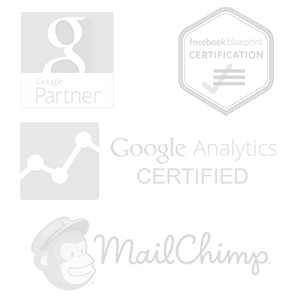This is an update on a post I wrote providing examples of winning your customer’s heart by using every opportunity to build your brand including even error messages. New examples from WeFollow and MailChimp.
My original impetus was Microsoft’s challenge of Google and how tough user behaviour is to change. This is particularly true when you’re up against a master marketer who knows not only how to win share but your emotional loyalty.
Take Coke vs. Pepsi for instance. Pepsi continues to win the taste tests and does some great marketing (love their logo redesign) but Coke continues to win the share battle because in addition to their skills in other areas like distribution they also have a healthy respect for creativity and how to use it win your heart.
In the world of marketing software Microsoft is similarly a master marketer in many areas such as distribution but, sadly, converting users into fans isn’t yet one of them.
Here’s a few examples. Work with me for a second and pretend you just had an error on your browser. You get this…
How do you feel? What are your emotions toward the brand? Frustrated?
Now let’s try it again. You have an error with Google’s Chrome:
How do you feel now? A little more forgiving? I think so. And that’s powerful.
Here’s another example from WeFollow.com. A little bizarre but it got my attention and turned a potential problem into an opportunity by creating a charming quirky personality for the WeFollow brand.
(In case you can’t place it, the quote is from Back to the Future).
Another example I came across recently was with MailChimp; the email service provider that I’ve come to value. However like their main competitor Constant Contact their templates can be very frustrating to customize. It was during the height of such frustration that I engaged a customer service rep via online chat. Not only did he solve my problem but when I congratulated him on such great service he responded:
eep! eep!
I LOLed and admired the fact that their monkey branding carried all the way down to customer service language. Again, as a customer their branding words took me as a customer from frustration to delight.
As we move from the TV era into an online world words have more power than ever before and are undergoing a renaissance. (Read “Reading Triples from 1998 to 2008 on Wired”.) For fun, here’s some more examples showing how Microsoft needs to craft a culture that understands this better.
Although they can seem small error messages can have a really big impact. When their screen crashed in Times Square this error message was two stories tall and seen by thousands.
Hearts & minds are won through words and pictures. Starbucks is another master brand-builder who gets this. You’ll find examples of how they do it on my blog which is why I think the loyalty of their customers will be a factor in their own current battle.
- Every swizzle stick tells a story.
- Every error message creates a fan or foe.
- Every visit is a conversation.
Microsoft needs to understand that in winning online hearts & minds, words become powerful weapons.




The one word that can be used to describe M$oft in this case is, Blocky. I don’t think you or me or anyone else wants to be blocky.